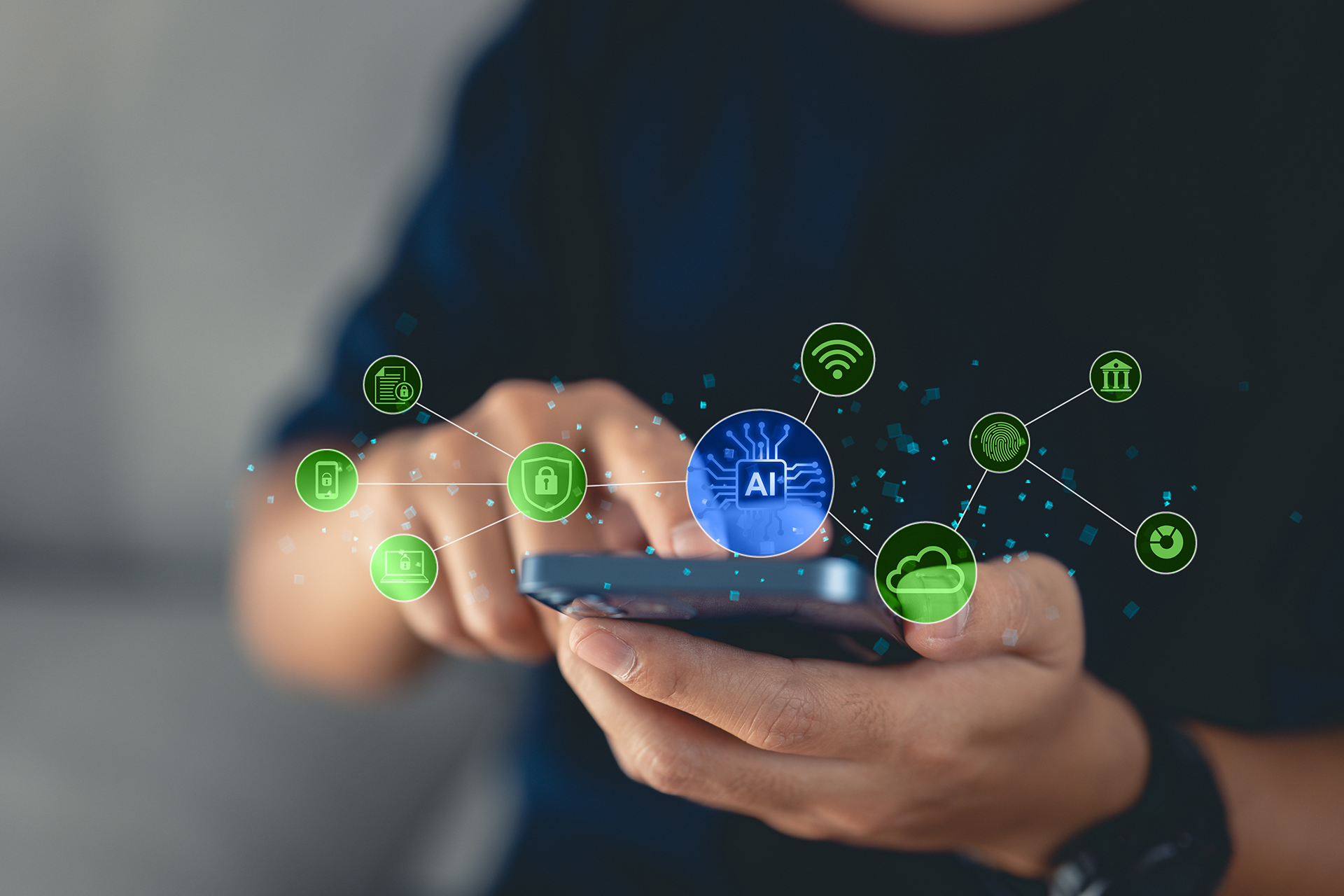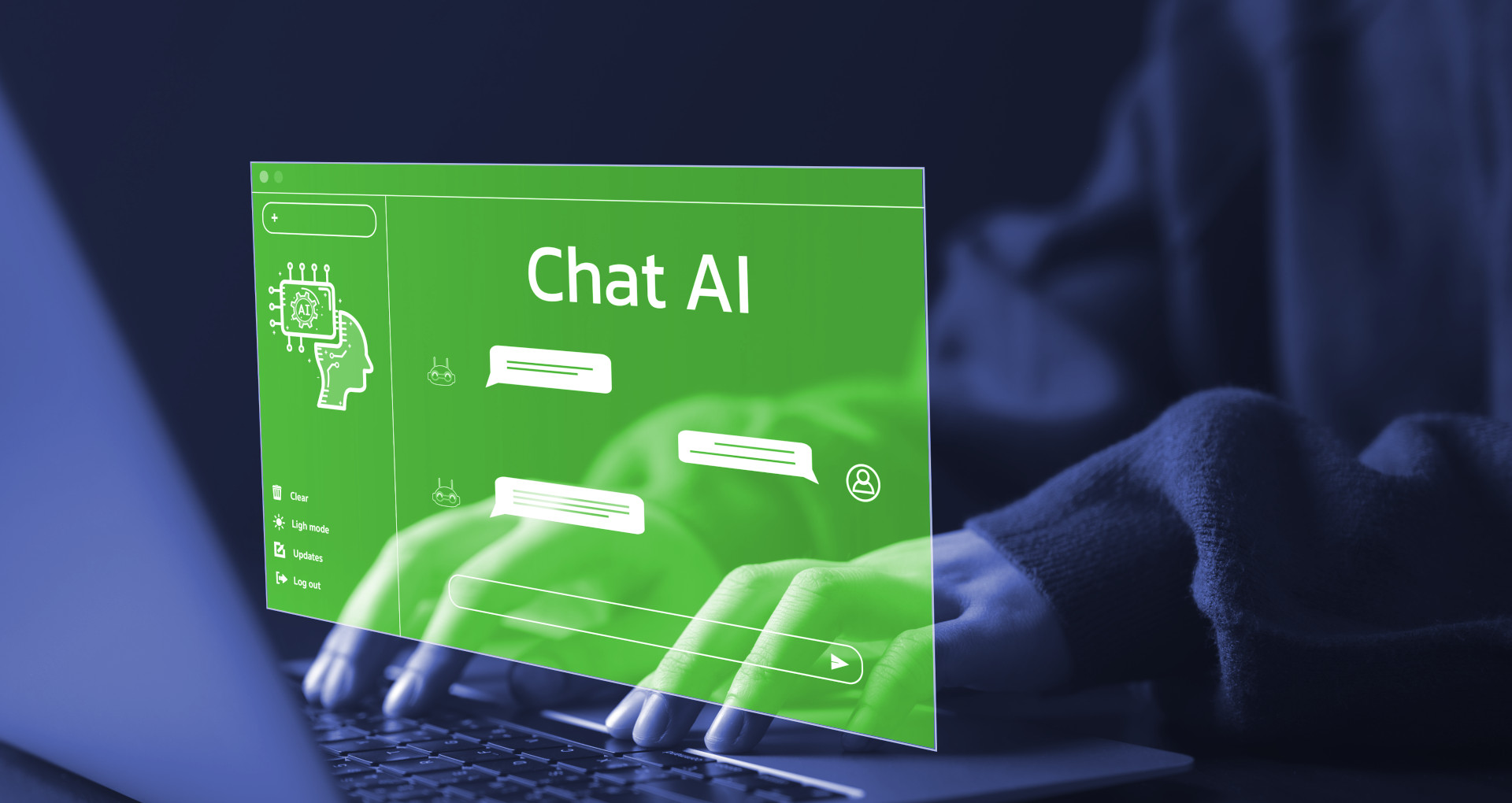The digital landscape is constantly evolving, and so are the customer preferences. Modern customers have shorter attention spans and prefer quick interaction with brands throughout their journey. Moreover, they need instant query resolution and personalized interactions that cater to their evolving needs. This is precisely where AI and chatbots play a critical role. A global survey from 2023 confirmed that consumers are interested in the chatbots’ functionalities, with 44 percent of respondents appreciating the help of chatbots in finding product information before the actual purchase. This clearly highlights that customers today are interested in using chatbots as online shopping assistants. In this blog, we will explore how AI and chatbots are enhancing the customer experience and will delve into real-world cases displaying the use of AI in CX.
Chatbots for Customer Experience (CX)
Chatbots today simulate human conversation using technologies like Natural Language Processing ( NLP) and Machine Learning (ML). This, combined with the fact that they are available 24/7 and can be easily integrated across platforms, makes them a favorite for brands looking to enhance their customer experience. They are integrated into various platforms, such as websites, messaging apps, and social media, to enable instant and personalized interactions between businesses and their customers. Chatbots are revolutionizing customer experience (CX), enabling businesses to engage with their audience at any time of the day.
In the realm of CX, chatbots serve multiple purposes, including answering customer inquiries, providing product recommendations, assisting with purchases, resolving issues, and more. By automating routine tasks and handling simple queries, chatbots free up human agents to focus on more complex and value-added tasks. This not only enhances operational efficiency but also improves customer satisfaction by delivering prompt and consistent support. Also, the data gathered by AI chatbots helps decision-makers make informed decisions, which ultimately improves CX.
How AI is Becoming a Game Changer for Chatbots
Artificial Intelligence (AI) is driving significant advancements in chatbot technology, transforming them from rule-based systems to intelligent conversational agents capable of understanding context and emotions. Natural Language Understanding (NLU) algorithms enable chatbots to comprehend user intents and extract meaning from unstructured text, allowing for more accurate and contextually relevant responses.
Machine learning algorithms empower chatbots to continuously improve their performance by learning from interactions with users. Through iterative training on large datasets, chatbots can refine their language understanding and response generation capabilities, resulting in more human-like conversations and higher levels of customer satisfaction.
Furthermore, AI enables chatbots to leverage data analytics to personalize interactions and anticipate customer needs. By analyzing past interactions, purchase history, and browsing behavior, chatbots can tailor recommendations and offers to individual preferences, enhancing the overall customer experience.
In essence, AI is reshaping the landscape of chatbots, making them indispensable tools for businesses seeking to deliver seamless and personalized customer experiences across digital channels.

Decoding AI-powered Chatbots
The modern AI-powered chatbots heavily rely on sophisticated Natural Language Processing (NLP) methods to comprehend and process human language effectively. These methods involve segmenting input text into tokens, deciphering its grammatical structure, and discerning entities, intents, and sentiments. Here are a few examples of techniques used by chatbots to provide enhanced CX:
- Tokenization: Breaking input text into tokens for analysis.
- Intent Recognition: Classifying user queries to understand intentions.
- Entity Recognition: Identifying specific information (dates, names, numbers, etc.) in user input.
- Dialog Management: Maintaining conversation context and flow.
- Response Generation: Generating replies based on identified intents and entities.
- Machine Learning Training: Improving through data-driven model refinement.
- Sentiment Analysis: Assessing user sentiment for tailored responses.
AI and Chatbot Use Cases in Customer Experience
- Chatbots/Conversational Assistants for Instant Customer Support: Chatbots or conversational assistants are deployed on websites, mobile apps, or messaging platforms to assist customers immediately. They can answer FAQs, provide product information, help with troubleshooting, and even initiate transactions. By offering instant responses, chatbots enhance customer satisfaction and streamline support processes.
- Voice Assistance for Voice-Based Support: Voice assistants like Amazon Alexa and Google Assistant, or customized voice interfaces, enable customers to interact using voice commands. This technology is utilized in call centers, smart home devices, and mobile apps to provide hands-free customer support. Voice assistance enhances accessibility and convenience for users who prefer verbal communication or cannot type.
- Hyper personalization for Personalized CX: Hyper personalization involves leveraging AI and data analytics to customize customer experiences based on individual preferences, behaviors, and demographics. Businesses can deliver customized content, product recommendations, and promotional offers through collaborative filtering, recommendation engines, and real-time personalization. By providing relevant and targeted experiences, hyperpersonalization enhances customer engagement, loyalty, and conversion rates.
- Predictive Analysis to Anticipate Customer Preferences: Predictive analysis uses AI algorithms and machine learning models to analyze historical data and identify patterns, trends, and correlations. In the CX space, predictive analytics is utilized to forecast customer behavior, preferences, and future trends. Businesses can anticipate customer needs, optimize inventory management, personalize marketing campaigns, and improve customer retention strategies by analyzing data from various touchpoints.
- Sentiment Analysis to Improve CX: Sentiment analysis employs natural language processing (NLP) and ML techniques to analyze text data and discern the emotional tone, opinions, and sentiments expressed by customers. By monitoring customer reviews, social media conversations, and survey responses, businesses gain insights into customer satisfaction, sentiment trends, and areas for improvement. Sentiment analysis enables organizations to promptly address issues, enhance product features, and refine CX strategies to better align with customer expectations.
How AI and Chatbots Help Improve Customer Experience
- Instant Help/response: Chatbots offer immediate assistance by quickly addressing customer queries or issues, ensuring timely resolution, and improving overall customer satisfaction. According to the Zendesk CX Trends Report, 71% of customers believe AI and chatbots help them get faster replies.
- 24/7 Availability: With chatbots, customers have access to support services round-the-clock, providing convenience and assurance that assistance is available whenever needed, regardless of time zones or business hours.
- Efficient Multitasking: Chatbots excel at handling multiple customer inquiries simultaneously, maximizing productivity and reducing wait times for users, thereby enhancing operational efficiency.
- Consistent Service: AI in customer service ensures consistent service quality across all interactions, ensuring that every customer receives the same level of assistance, information, and support, thereby maintaining brand reputation and trust.
- Data-Driven Improvements: By analyzing data from chatbot interactions, businesses gain valuable insights into customer preferences, pain points, and behavior, enabling them to make informed decisions and continuously improve their customer service strategies.
- Personalized Interactions: Chatbots leverage user data to offer customized responses and recommendations tailored to individual preferences and past interactions, fostering more robust customer relationships and increasing engagement.
- Handling Repetitive Tasks: Chatbots automate routine tasks such as answering frequently asked questions (FAQs) and processing standard requests, allowing human agents to focus on more complex and high-value activities, thus improving overall productivity and job satisfaction.
- Multilingual Support: Chatbots can provide assistance in multiple languages, enabling businesses to effectively serve diverse customer demographics, expand their reach, and enhance inclusivity.
- Omnichannel Integration: Chatbots seamlessly integrate with various communication channels such as websites, mobile apps, social media platforms, and messaging services, ensuring a consistent and cohesive experience for customers across all touchpoints.
- Continuous Learning and Improvement: ML algorithms allow chatbots to continuously learn from user interactions and feedback to refine their responses and capabilities over time, thereby staying relevant and adaptable to changing customer needs and preferences.
- Cost savings for businesses and customers: Chatbots reduce operational costs for companies by automating support processes and reducing the need for human intervention while also providing cost-effective and accessible support for customers, resulting in overall savings for both parties.
Real-world examples of businesses using AI and Chatbots
- Amazon: Amazon Alexa is one of the most significant examples of AI in customer experience. Alexa is Amazon’s virtual assistant powered by AI, which assists users with various tasks such as setting reminders, playing music, providing weather updates, and even making purchases through voice commands. Amazon also employs AI-driven recommendation systems to suggest products to customers based on their browsing history, purchase behavior, and preferences, enhancing the shopping experience and driving sales. They also have AI-powered chat support that helps users track their products, ask questions about orders, connect with human-agent support, and more.
- Uber: Uber utilizes AI in various aspects of its business, including route optimization, demand forecasting, and driver matching. AI algorithms analyze real-time data to predict demand patterns, optimize driver routes, and improve efficiency. Uber also integrates chatbots into its platform to facilitate communication between riders and drivers, handle inquiries, resolve issues, and provide updates on trip status through messaging interfaces.
- Healthify: Healthify has leveraged an AI chatbot on its platform to help customers with a variety of tasks to support their health and wellness journey. Its AI chatbot, known by the name ‘AI coach Ria,’ helps customers log meals and snacks to monitor their daily calorie intake, get food and nutrition information, exercise recommendations, diet tips, motivation, and support.
How businesses can improve the performance of AI chatbots to deliver a great CX
- Define the clear purpose/role of the chatbot: Begin by defining the chatbot’s specific role, whether it’s aimed at customer support, sales assistance, lead generation, or fulfilling other designated functions. This clear objective will inform the chatbot’s design and training process.
- Ensure quality training data: Prioritize using meticulously curated and relevant training data to refine the chatbot’s models. Comprehensive datasets covering diverse user inputs and scenarios are essential for enhancing the chatbot’s accuracy and comprehension.
- Regularly update the chatbot’s NLU models: Regularly update the chatbot’s NLU models to adapt to evolving language nuances and user communication patterns. Incorporating user feedback will be instrumental in refining the chatbot’s ability to comprehend and respond accurately.
- Ensure Dialog Flow Optimization: Implement robust dialog management techniques to ensure seamless continuity in conversations. The chatbot should adeptly handle interruptions, follow-up inquiries, and complex interactions to provide a satisfying user experience.
- Ensure human-bot collaboration: Ensure that the chatbot can seamlessly transition interactions to human agents when necessary, particularly during intricate or sensitive conversations. Establish mechanisms for human oversight to review and enhance chatbot responses continuously.
- Establish KPIs to measure the chatbot’s success: Establish clear Key Performance Indicators (KPIs) to assess the chatbot’s effectiveness, including metrics such as response accuracy, resolution time, customer satisfaction levels, and escalation rates.
- Ensure adequate security and privacy: Uphold stringent security measures to protect user data and ensure compliance with data protection regulations. Prioritize privacy concerns throughout the chatbot’s development and deployment process.

What more can we expect from AI and Chatbots in 2024?
As AI technology continues to evolve, its impact on businesses and customer services will also grow. In 2024, advancements in AI and chatbot technology are anticipated to bring several notable developments:
- Chatbots will become more human-like and empathetic: As AI technology progresses, chatbots are evolving to exhibit increasingly human-like capabilities. This includes improved natural language processing, a better understanding of tone and context, and the ability to simulate human conversational patterns. These advancements enable chatbots to provide more empathetic and tailored responses, resulting in more engaging and personalized interactions for users.
- Integration with Emerging Technologies: Anticipate significant strides in integrating AI with emerging technologies like IoT, AR, and VR, paving the way for highly immersive customer experiences. This synergy will revolutionize how businesses engage with customers, offering interactive and captivating interactions across various platforms.
- Voice bots may become mainstream: Voice-activated chatbots, also known as voice bots, are expected to become mainstream, leveraging advancements in speech recognition and synthesis technologies. Users will rely more on voice-based commands to interact with AI assistants, driving the integration of voice-based interfaces in various devices and applications.
- Chatbots for payments will evolve: Chatbots for payments will evolve to offer more sophisticated and seamless transactional experiences. They will not only assist users in making purchases or transactions but also provide personalized recommendations, track spending habits, and offer financial advice. Integration with secure payment gateways and blockchain technology may further enhance the security and efficiency of payment chatbots.
How ResultCX can help
In conclusion, the role of AI and chatbots in enhancing customer experience (CX) cannot be overstated. These technologies are pivotal in meeting modern consumers’ evolving needs and preferences by providing instant, personalized, and efficient support across various touchpoints. As we look forward to the developments in 2024 and beyond, we anticipate even more significant advancements in AI and chatbot technology. It is high time that every business operating in today’s digital landscape must adopt and leverage the full potential of AI and chatbots to deliver a great CX. At ResultCX, we help businesses enhance their customer experience with our AI and Operation Bots Services and Support Predict Solutions (SupportPredict Agent AI, SupportPredict Self-Service Bots).
Recently, we helped the U.S. Fortune 500 health plan navigate the complexities of the Annual Enrollment Period (AEP) and achieve significant performance enhancements. Leveraging our AI-powered digital experience platform, Support Predict, and analytics, we streamlined agent workflows, accelerated time to proficiency for new hires, and enhanced agents’ understanding of complex member support needs. Newly hired agents assisted by SupportPredict Bots consistently outperformed their peers:
- 15% higher accuracy scores while meeting the speed-to-proficiency target in the first month
- 12% greater customer satisfaction during the first month, with gains during months two and three
- One-minute reduction in AHT during the first month, with additional gains in the two subsequent months
- Reduced after-call work time and shorter hold times, alongside increased accuracy








